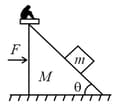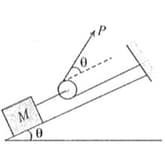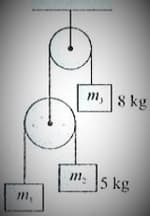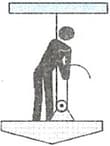A monkey has a firm hold on a light rope that passes over a frictionless pulley and is attached to a bunch of bananas (as shown in the figure). The monkey looks up, sees the bananas and starts to climb the rope to get them.
(a) As the monkey climbs, do the bananas move up, down or remain at rest?
(b) As the monkey climbs, does the distance between the monkey and the bananas decrease, increase or remain constant?
(c) The monkey releases its hold on the rope. What happens to the distance between the monkey and the bananas while it is falling?
(d) Before reaching the ground, the monkey grabs the rope to stop its fall. What do the bananas do?
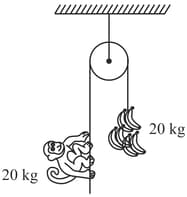
(b) As the monkey climbs, does the distance between the monkey and the bananas decrease, increase or remain constant?
(c) The monkey releases its hold on the rope. What happens to the distance between the monkey and the bananas while it is falling?
(d) Before reaching the ground, the monkey grabs the rope to stop its fall. What do the bananas do?


Important Questions on Newton's Laws of Motion (Without Friction)
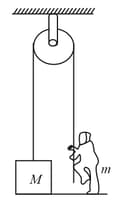
What should be the minimum force to be applied to the string so that block of mass just begins to move up the frictionless plane?
Three blocks and are arranged as shown in the figure. If and , at what value of will mass be at rest?
In the given figure, the man and the platform together weigh . The pulley can be treated as frictionless. Determine how hard the man has to pull on the rope to lift himself upward above the ground with constant velocity. If the weight of man is , what is the normal reaction between them?

A body hangs from a spring balance supported from the roof of an elevator.
(a) If the elevator has an upward acceleration of And the balance reads , what is the true weight of the body?
(b) Under what circumstances will the balance read
(c) What will be the balance reading if the elevator cable breaks?
The block of mass Is in equilibrium relative to the smooth wedge of mass Which is pushed by a horizontal force Find
(a) Pseudo force acting on m
(b) As viewed by the observer sitting on the wedge. Will these pseudo forces
(c) equal and opposite, action–reaction pairs? Explain.
